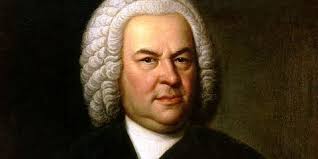Johann Sebastian Bach, one of the most influential composers of the Baroque era, created Cantata No. 152, titled “Tritt auf die Glaubensbahn” (“Step Upon the Path of Faith”), during his time in Weimar. This composition is a shining example of Bach’s early mastery of sacred music, blending theological depth with musical ingenuity.
Context and Creation
Cantata No. 152 was composed for the Sunday after Christmas, a liturgical occasion that inspired reflective and spiritually uplifting themes. The piece was first performed on December 30, 1714, during Bach’s tenure as Konzertmeister at the Weimar court. This period was particularly productive for Bach, as he was tasked with composing one cantata approximately every month for the ducal chapel.
The libretto for Cantata No. 152 was penned by Salomon Franck, the court poet in Weimar. Franck’s text reflects the intimate and contemplative nature of the post-Christmas season, emphasizing faith and the believer’s journey. This collaboration between Bach and Franck resulted in several cantatas that remain central to Bach’s oeuvre.
Structure and Scoring
Cantata No. 152 is notable for its chamber-like quality, scored for an unusually small ensemble. The instrumentation includes a recorder, an oboe, a viola d’amore, a viola da gamba, and continuo, alongside two vocal soloists: a soprano and a bass. This intimate scoring allows for intricate interplay between the instruments and voices, creating a deeply personal and reflective atmosphere.
The cantata is structured in six movements:
- Sinfonia: An instrumental introduction featuring the unique timbres of the recorder and oboe.
- Aria (Bass): “Tritt auf die Glaubensbahn” – A bass aria that invites the listener to embark on the path of faith.
- Recitative (Soprano, Bass): A dialogue between the soul (soprano) and Jesus (bass), symbolizing spiritual guidance.
- Aria (Soprano): “Stein, der über alle Schätze” – A lyrical expression of the soul’s joy in faith.
- Recitative (Bass): A brief reflection by Jesus, assuring the believer of divine presence.
- Duet (Soprano, Bass): “Wie soll ich dich empfangen” – A closing duet that encapsulates the themes of faith and trust.
Musical Highlights
One of the most striking aspects of Cantata No. 152 is its sinfonia, which sets the tone with a delicate interplay of the recorder and oboe. The use of the viola d’amore and viola da gamba adds a rich, warm texture, characteristic of Bach’s innovative use of instrumentation.
The arias and recitatives display Bach’s talent for word painting, where the music vividly illustrates the text. For example, in the bass aria “Tritt auf die Glaubensbahn,” the steady rhythm mirrors the metaphorical footsteps of faith. Similarly, the duet “Wie soll ich dich empfangen” brings the cantata to a serene and harmonious conclusion, symbolizing spiritual unity.
Legacy and Significance
Cantata No. 152 holds a special place in Bach’s body of work due to its intimate character and the unique instrumentation that sets it apart from many of his larger-scale cantatas. It offers listeners a glimpse into Bach’s ability to convey profound theological concepts through music, even on a smaller scale.
Today, Cantata No. 152 continues to be performed and studied as a testament to Bach’s genius and his dedication to creating music that elevates both the spirit and the intellect. Whether heard in a church, concert hall, or recording, this cantata remains a moving reflection on faith and devotion, capturing the timeless essence of Bach’s artistry.


Comments are closed